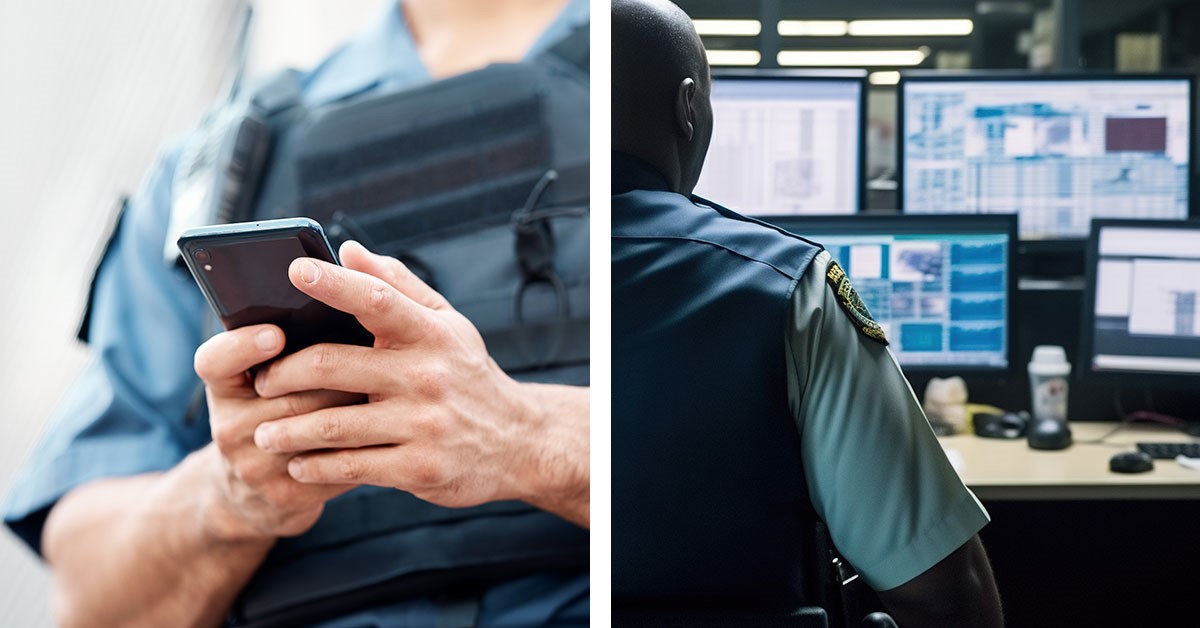Using ArcGIS Mission to Support Public Safety

Innovations in GIS technology are transforming the way industries meet their missions, from utilities, to emergency management, to transportation. In the public safety field, new advances in real-time situational awareness and data collection have had major impacts on law enforcement operations—and ultimately on the ability to keep our communities safe.
One such technology, Esri’s ArcGIS Mission, is a comprehensive command and control solution that enables real-time situational awareness and collaboration for teams involved in field operations. EBA Engineering has been helping our law enforcement clients configure and use ArcGIS Mission to support both special and standard operations.
Here, we consider how ArcGIS Mission can assist different stakeholders in public safety, such as command staff, supervisors, and field officers, especially in the areas of real-time situational awareness and data collection.
Real-time situational awareness
ArcGIS Mission tools allow public safety professionals to streamline workflows, coordinate tactical maneuvers, stay connected with their team, and understand special and ongoing operations. In the ArcGIS Mission environment, employees can create, share, and monitor maps, teams, and other materials for operations and interact with mission teams in real time. These capabilities provide valuable insights and solutions to multiple stakeholders.
ArcGIS Mission helps field officers:
- Communicate with their supervisors and other officers.
- Document policing and crime activity.
- See where their colleagues and recent crime activities are on a map in real time.
- Receive critical information on their smart phone via the ArcGIS Responder app.
ArcGIS Mission helps supervisors:
- Track field officer movement in real time.
- Issue commands and distribute critical information to their officers.
- Access and visualize data to analyze spatial trends and develop informed policing strategy.
- Track, organize, and search reports and other documentation submitted by field officers via mobile technology.
ArcGIS Mission helps command staff:
- Oversee the overall operations.
- Review the performance and outcomes of missions.
- Leverage the data collected by ArcGIS Mission to demonstrate the effectiveness of strategy.
- Compare the spatial distribution of public safety issues and how strategies affect those patterns.
Data collection
In addition to situational awareness, ArcGIS Mission is also a valuable avenue for data collection. Law enforcement is using this capability to enhance policing efforts and meet departmental needs, such as:
- Improving documentation while reducing paper waste. Field officers can record and report their activities using the ArcGIS Responder app, which syncs data with the ArcGIS Mission Server.
- Protecting officers in the field by maintaining effective communication and awareness. Field officers can exchange messages, alerts, and attachments with their supervisors and other officers using the ArcGIS Responder app.
- Ensuring accountability and transparency by maintaining a record of police officer locations, communications, and activities. Supervisors and command staff can track and monitor the movements and actions of field officers using the ArcGIS Mission Manager web app.
Directed patrol and regular operations
ArcGIS Mission was initially designed with special operations in mind, such as disaster response, search and rescue, or tactical operations. However, we have also helped our clients configure ArcGIS Mission environments to support directed patrol strategy and regular shift operations, which are more common and ongoing types of law enforcement.
Directed patrol is a proactive form of policing, where law enforcement assigns additional officers to patrol high-crime areas at high-risk times to deter would-be criminals. Officers visit hot spots for 10–16 minutes, at most, about every 2 hours. Visits are also randomized, so that would-be criminals cannot anticipate patrols.
ArcGIS Mission can be used to:
- Identify and prioritize hot spots using spatial analysis tools, such as hotspot analysis, density analysis, and cluster analysis.
- Create missions or tasks that assign officers to patrol these hot spots, as well as to collect and report any crime or incident data.
- Monitor the performance and impact of the directed patrol missions, such as the number of stops, arrests, citations, and calls for service, as well as the changes in crime patterns and rates.
We are using ArcGIS Mission to support regular daily operations, such as assigned patrols, calls for service, and traffic stops, by:
- Creating missions that reflect the shift schedules, assignments, and objectives of field officers.
- Providing field officers and their supervisors with relevant and updated information and resources, such as maps, briefings, checklists, and attachments.
- Enabling field officers to communicate and collaborate with their supervisors and other officers, as well as to document and share their observations and actions in the field.
- Supporting data housing and archival requirements for ongoing data collection.
- Incorporating search, review, and analysis tools to provide mission data for performance assessment, reporting, and visualization.
In all, ArcGIS Mission is a versatile and powerful tool that can enhance many types of public safety operations and improve overall efficiency, effectiveness, and safety. It can also be combined with other ArcGIS solutions, such as ArcGIS AllSource, ArcGIS Dashboards, ArcGIS Insights, and ArcGIS StoryMaps, to showcase the results and outcomes of missions. ArcGIS Mission and other evolving GIS solutions will continue to be vital in meeting many clients’ spatial technology and asset management needs.
If you are interested in learning more about ArcGIS Mission or our work with public health and safety agencies, please contact EBA.
Zachary Moore is a GIS analyst for geographIT, a division of EBA Engineering, Inc. He can be reached at 717.676.6329, zachary.moore@ebaengineering.com, or on LinkedIn.
